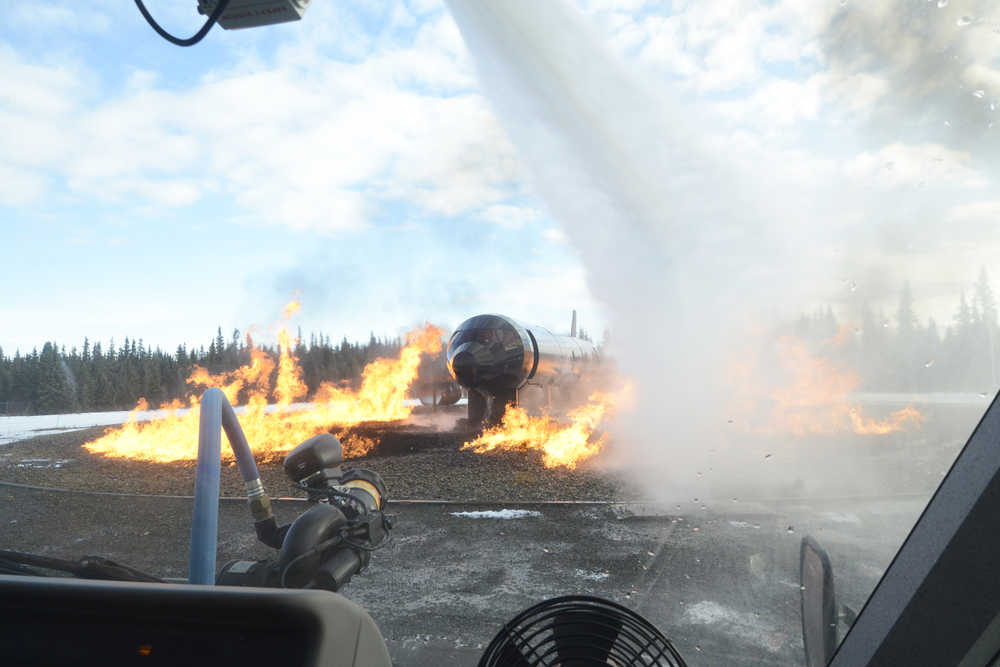After getting the signal to start over the radio, Kenai Fire Marshal Tommy Carver swung a 3,000 gallon fire engine around to face a mass of flames licking the sides of prop airplane and took aim.
Carver and several other firefighters took turns running through an aircraft rescue drill Monday at the Beacon Occupational Health and Safety Services Training Center in Kenai. Along with other equipment, local firefighters use two prop airplanes at the center to simulate a myriad of fire scenarios, which they practice mitigating or putting out. One simulates fires on the outside of the aircraft while the other allows firefighters to practice battling interior blazes in the cabin and other possible locations.
Monday’s drill was focused on the larger prop plane with flames limited to the outside. Flames shot out and up around the sides of the plane, controlled by another member of the Kenai Fire Department and a Beacon staff member. The flames can come up through any part of the large pit of black rocks the prop sits on, Carver said.
“There’s a whole gridwork of piping (so) that they can control the size and intensity of the fires,” he said.
Aircraft Rescue and Firefighting training comes with basic and advanced certifications. The advanced training is mandatory for any employee of the Kenai Fire Department, since its jurisdiction includes a station at the Kenai Municipal Airport, Carver said.
Carver said the goal of Monday’s practice was for department staff to practice lining the fire engine up with the nose of the plane and mitigating a fire blocking the aircraft’s main exit.
“Human nature is, you go out where you come in,” Carver said, adding that spraying water to carve a path through the flames is how firefighters help trapped passengers. “The fire that we did was a really basic one. They can make it a whole lot more complex where it takes multiple vehicles.”
The department will spend two to three hours training with each shift of firefighters, he said. While the practice is mandated at least once a year by the Federal Aviation Administration, Carver said the department holds training sessions as often as its budget allows.
Engine six, the one used during Monday’s drills, is brought out whenever Kenai Fire gets an alert from an aircraft. The alerts range in severity, with Alert 3 being the most serious type and meaning the aircraft has actually crashed. Kenai Fire gets around a dozen alerts of the first two varieties each year, Carver said.
Engine six was most recently called out for an aircraft crash last year, though it was not able to get all the way to the site just north of the airport due to soggy ground conditions, Carver said.

